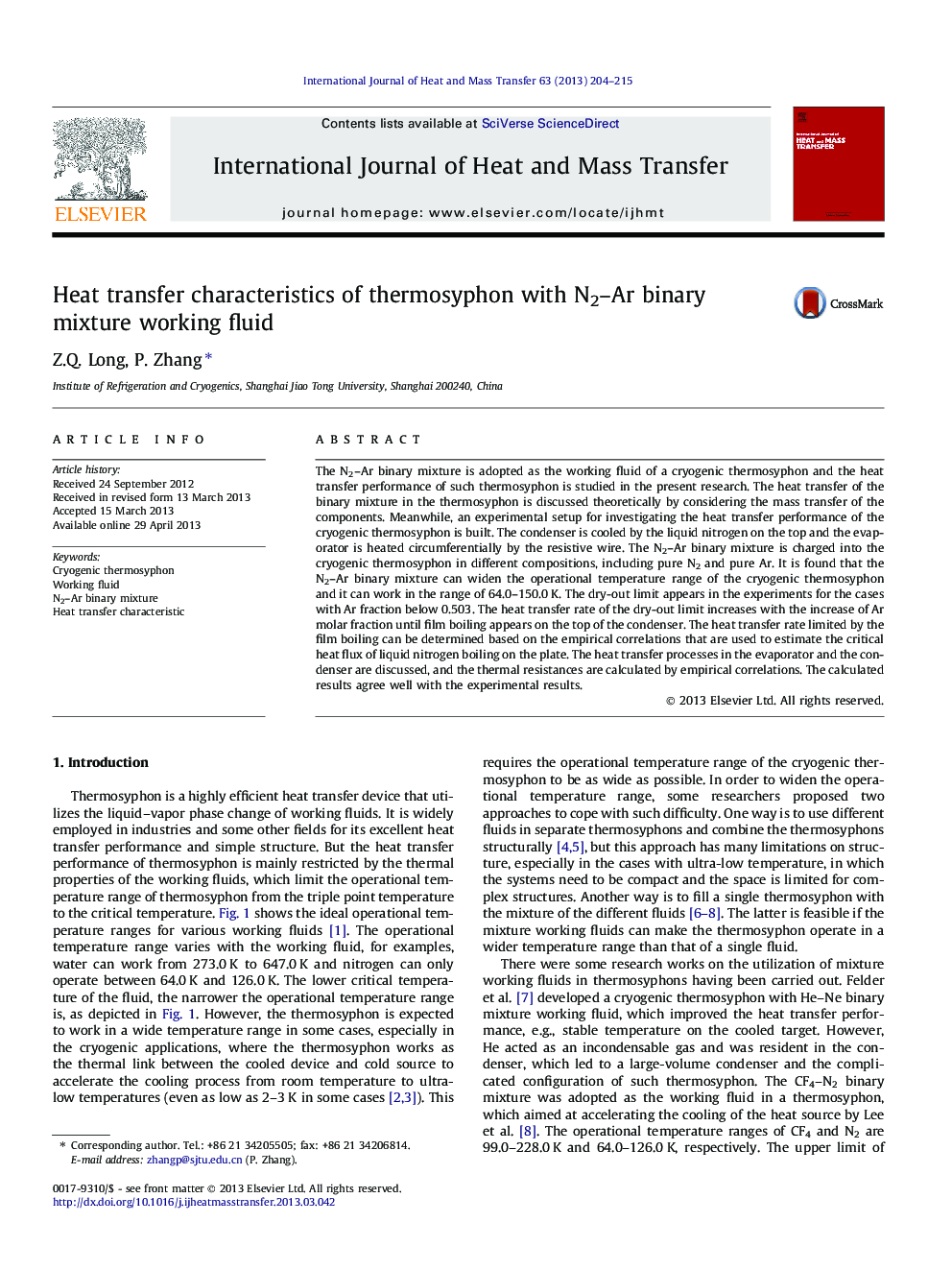| Article ID | Journal | Published Year | Pages | File Type |
|---|---|---|---|---|
| 658160 | International Journal of Heat and Mass Transfer | 2013 | 12 Pages |
Abstract
The N2-Ar binary mixture is adopted as the working fluid of a cryogenic thermosyphon and the heat transfer performance of such thermosyphon is studied in the present research. The heat transfer of the binary mixture in the thermosyphon is discussed theoretically by considering the mass transfer of the components. Meanwhile, an experimental setup for investigating the heat transfer performance of the cryogenic thermosyphon is built. The condenser is cooled by the liquid nitrogen on the top and the evaporator is heated circumferentially by the resistive wire. The N2-Ar binary mixture is charged into the cryogenic thermosyphon in different compositions, including pure N2 and pure Ar. It is found that the N2-Ar binary mixture can widen the operational temperature range of the cryogenic thermosyphon and it can work in the range of 64.0-150.0Â K. The dry-out limit appears in the experiments for the cases with Ar fraction below 0.503. The heat transfer rate of the dry-out limit increases with the increase of Ar molar fraction until film boiling appears on the top of the condenser. The heat transfer rate limited by the film boiling can be determined based on the empirical correlations that are used to estimate the critical heat flux of liquid nitrogen boiling on the plate. The heat transfer processes in the evaporator and the condenser are discussed, and the thermal resistances are calculated by empirical correlations. The calculated results agree well with the experimental results.
Related Topics
Physical Sciences and Engineering
Chemical Engineering
Fluid Flow and Transfer Processes
Authors
Z.Q. Long, P. Zhang,
